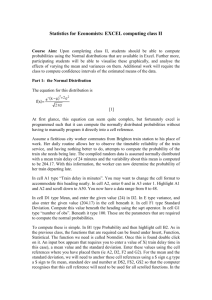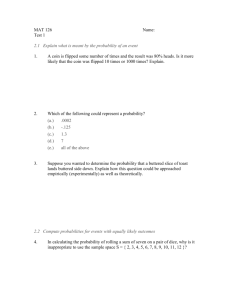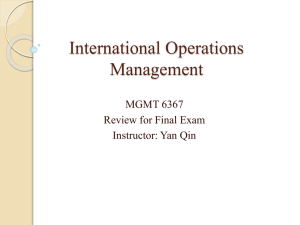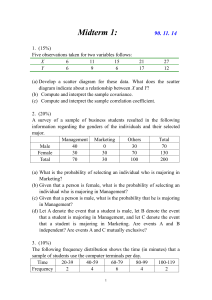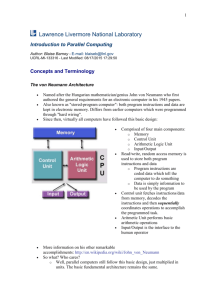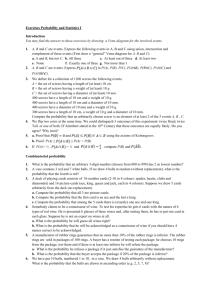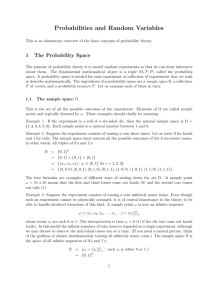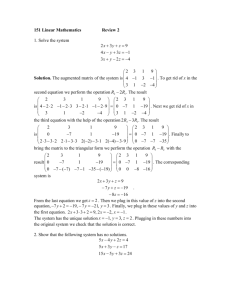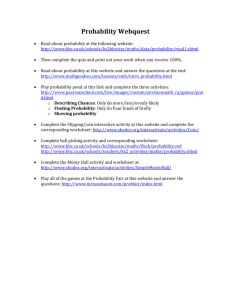Homework 5-Due date 2/18/04
advertisement
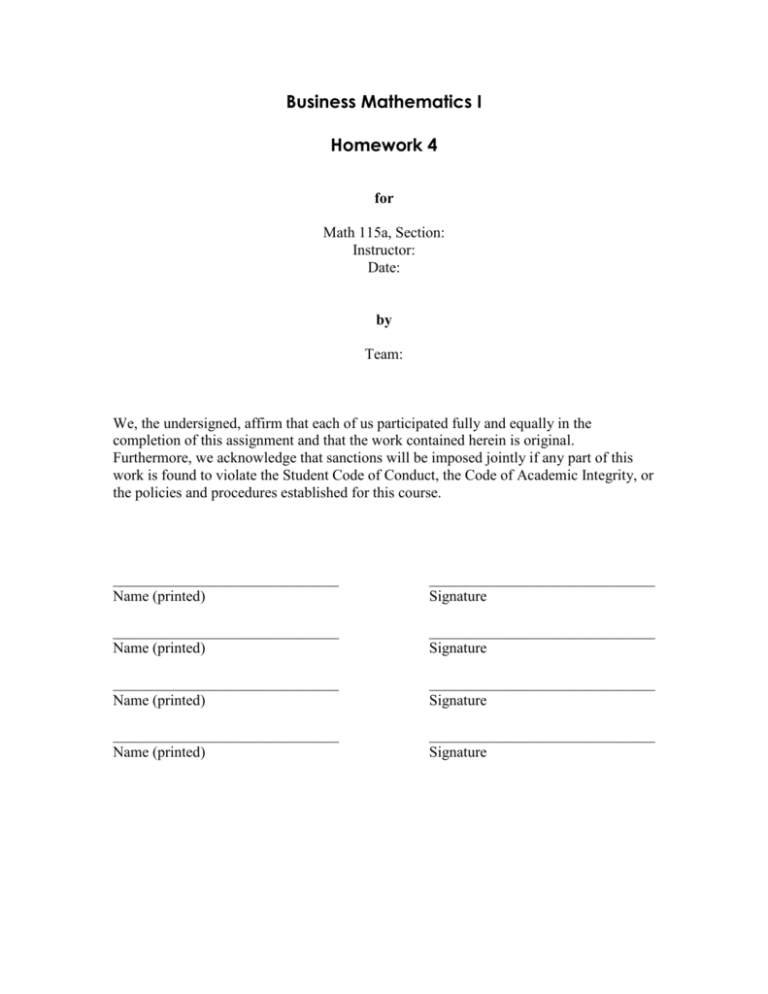
Business Mathematics I Homework 4 for Math 115a, Section: Instructor: Date: by Team: We, the undersigned, affirm that each of us participated fully and equally in the completion of this assignment and that the work contained herein is original. Furthermore, we acknowledge that sanctions will be imposed jointly if any part of this work is found to violate the Student Code of Conduct, the Code of Academic Integrity, or the policies and procedures established for this course. ______________________________ Name (printed) ______________________________ Signature ______________________________ Name (printed) ______________________________ Signature ______________________________ Name (printed) ______________________________ Signature ______________________________ Name (printed) ______________________________ Signature 1. Let V be the product of the faces obtained by rolling a fair die twice. Use the sample space, S, to compute P(V 9) . (1,1) (2,1) (3,1) S (4,1) (5,1) (6,1) (1,2) (1,3) (1,4) (1,5) (2,2) (2,3) (2,4) (2,5) (3,2) (3,3) (3,4) (3,5) (4,2) (4,3) (4,4) (4,5) (5,2) (5,3) (5,4) (5,5) (6,2) (6,3) (6,4) (6,5) (1,6) (2,6) (3,6) (4,6) (5,6) (6,6) 2. Let T be the number of tails obtained in four tosses of a fair coin. A fair coin is tossed four times and the outcome of each toss is recorded. Use the sample space, S, to compute P (T 1) . ( HHHH ) ( HTHH ) S (THHH ) (TTHH ) ( HHHT ) ( HHTH ) ( HHTT ) ( HTHT ) ( HTTH ) ( HTTT ) (THHT ) (THTH ) (THTT ) (TTHT ) (TTTH ) (TTTT ) 3. Let V be the product of the faces obtained by rolling a fair die twice. Use the sample space, S, to compute P(6 V 20) . (1,1) (2,1) (3,1) S (4,1) (5,1) (6,1) (1,2) (1,3) (1,4) (1,5) (2,2) (2,3) (2,4) (2,5) (3,2) (3,3) (3,4) (3,5) (4,2) (4,3) (4,4) (4,5) (5,2) (5,3) (5,4) (5,5) (6,2) (6,3) (6,4) (6,5) (1,6) (2,6) (3,6) (4,6) (5,6) (6,6) 4. Job performance is to be rated in three categories: knowledge, initiative, and communication. You receive a G (good), F (fair), or P (poor) in each category. Let Y be the random variable giving the number of P’s in your evaluation. Use a sample space consisting of all possible ordered triples of the letters G, F, and P; and assume that each of the possible outcomes is equally. For example, the outcome FFG corresponds to an evaluation of fair for knowledge, fair for initiative, and good for communication. Compute P (Y 1) . 5. Consider the lottery describe in Example 6 in Expected Value. The state plans to keep the same probabilities, but raise the top prize above $1,000,000. How high could the prize go and still give the state an expected value of $0.40 per ticket? 6. (Exercise 11 in Expected Value) Consider the lottery describe in Example 6. The state plans to keep the same probabilities, but raise the top prize above $1,000,000. How high could the prize go and still give the state an expected value of $0.50 per ticket? 7. If you invest in a new mail order business there is a 25% chance that you lose $45,000, a 60% chance that you break even, and a 15% chance that you make $80,000. Compute the expected value of the investment. 8. Let X be the number of tails obtained in three tosses of a fair coin. Compute E ( X ) . 9. Let T be the number of tails obtained in four tosses of a fair coin. Compute E (T ) . 10. (Exercise 15 in Expected Value) Compute the expected value of a loan work out for your team’s particular borrower’s loan. Use only the full and default values of his or her loan, and the probabilities of a successful or failed work out, based on the complete set of bank records. Does this indicate a work out or foreclosure for your borrower?


